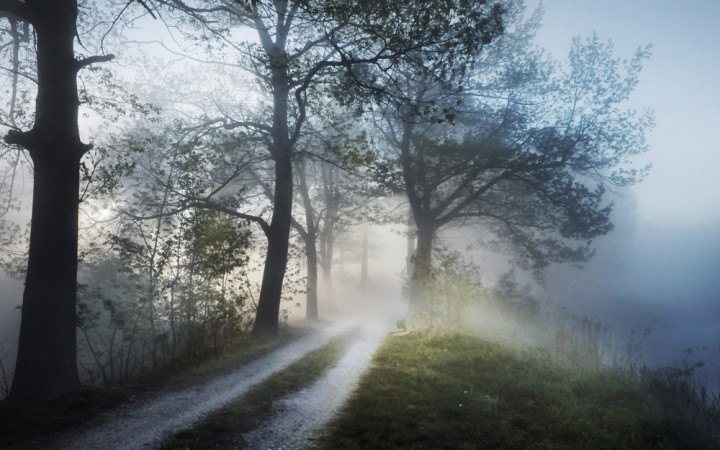Where does fog come from? Would you believe us if we told you we don't have the foggiest idea? Probably not… we're in Wonderopolis, after all!
The next time you wake up in the morning to dense fog, you can say “It's cloudy outside!" instead of “It's foggy outside!" Why? Because fog is just a regular cloud that happens to be close to the ground rather than high up in the air.
So how does fog get down here close to Earth? Does a strong wind blow a cloud out of the sky down to the surface of the Earth? Not quite…
Fog actually forms close to the Earth where we see it. The same scientific processes that usually happen way up high in the atmosphere to create clouds can take place closer to the ground. When they do, we get fog.
Basically, fog forms when warm air meets colder air. When this happens, water vapor in the air — a gas — is cooled enough for the gas to turn to a liquid in the form of tiny water droplets. This process is called "condensation."
We see those groups of tiny droplets as clouds or, when they're close to the ground, as fog. As the air heats up again, fog will slowly disappear as the tiny water droplets once again return to a gas in the form of water vapor.
There are four main types of fog. Radiation fog occurs when the ground radiates heat outward while the air above the ground begins to cool after the sun sets. If the temperature of the air sinks below its dew point, water vapor will condense around dust in the air to form fog.
Advection fog occurs when warm air moves in over a cooler land surface. This happens often along coastlines, for example, when warm ocean breezes blow in over cooler land. The land cools the warm air below the dew point, and fog forms.
Upslope fog occurs when warm air passes over the upward slope of a cool mountain. As elevation increases, the mountain cools the air quickly, causing condensation and fog.
Evaporation fog occurs when extra water vapor comes into contact with air that is already heavily saturated. Because the air can only hold so much water vapor, adding extra water vapor from evaporation, such as from a lake in the hot sun, can cause the air to reach the dew point and form fog.
While it can be neat — and sometimes a bit creepy — to see fog, it can also be dangerous. When fog is very thick and near the ground, it can reduce visibility to only a few feet. This makes driving in fog particularly dangerous.
The foggiest place in the world is the Grand Banks off the coast of Newfoundland in Canada. Here, the cold Labrador Current from the north meets the warm Gulf Stream from the south, creating the perfect conditions for fog.
Other very foggy areas include Argentina, Labrador and Point Reyes, California. Each of these areas reports more than 200 foggy days every year.




